What Roses Do Not Need Deadheading: Easy-Care Varieties for Your Garden
If you love roses but dislike the chore of regular pruning, you’re not alone. The task of deadheading, or removing old flowers to encourage new blooms, can be time-consuming. Thankfully, some rose varieties take care of themselves. Self-cleaning roses like the Knockout series and certain carpet roses do not need deadheading, making them a low-maintenance option for any garden.
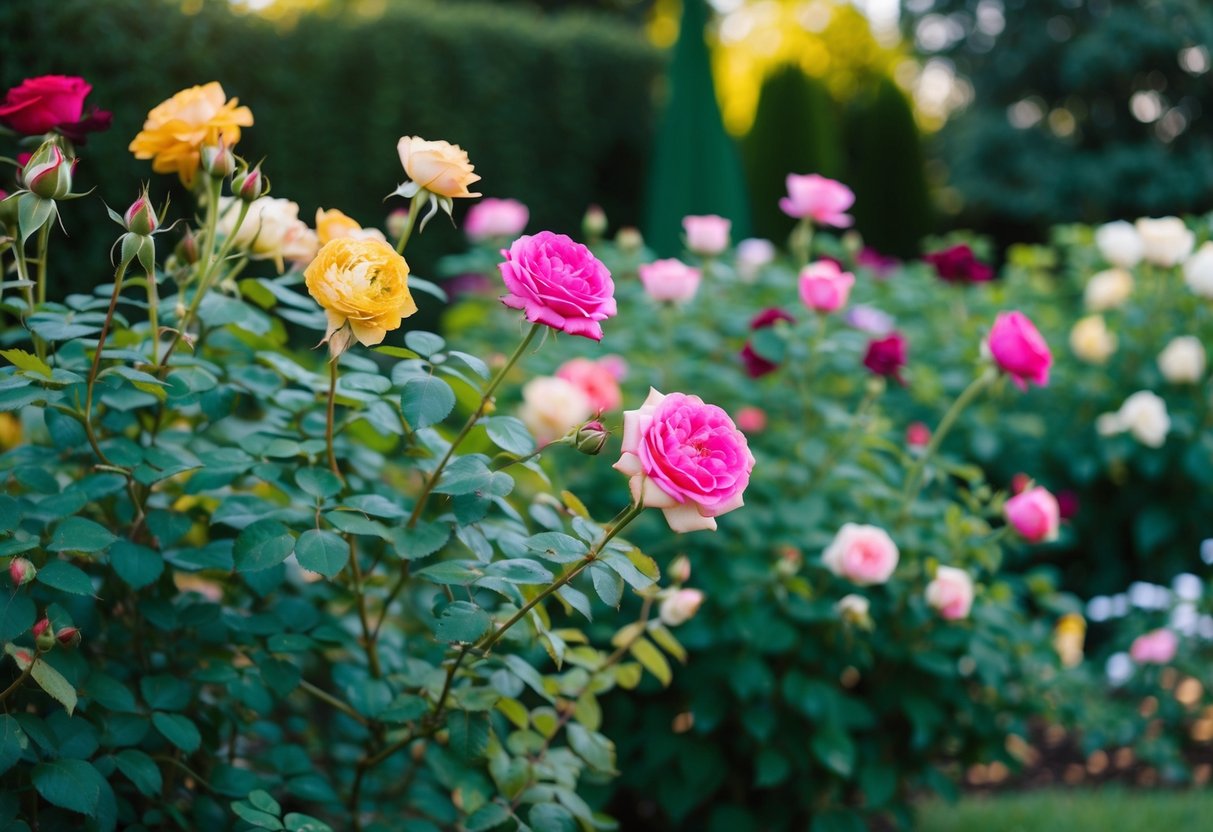
These roses are perfect if you want vibrant blooms without the hassle. Self-cleaning roses shed their spent flowers naturally, allowing them to produce fresh blooms repeatedly throughout the season. This feature not only saves you time but also keeps your garden looking neat and fresh without much effort.
Imagine walking through your garden and seeing a continuous show of color without lifting a finger. With the right choices, like selecting roses that require little to no deadheading, you can enjoy a vibrant and attractive landscape effortlessly. Whether you’re an avid gardener or just getting started, these convenient roses will add beauty and simplicity to your gardening experience.
Understanding Deadheading
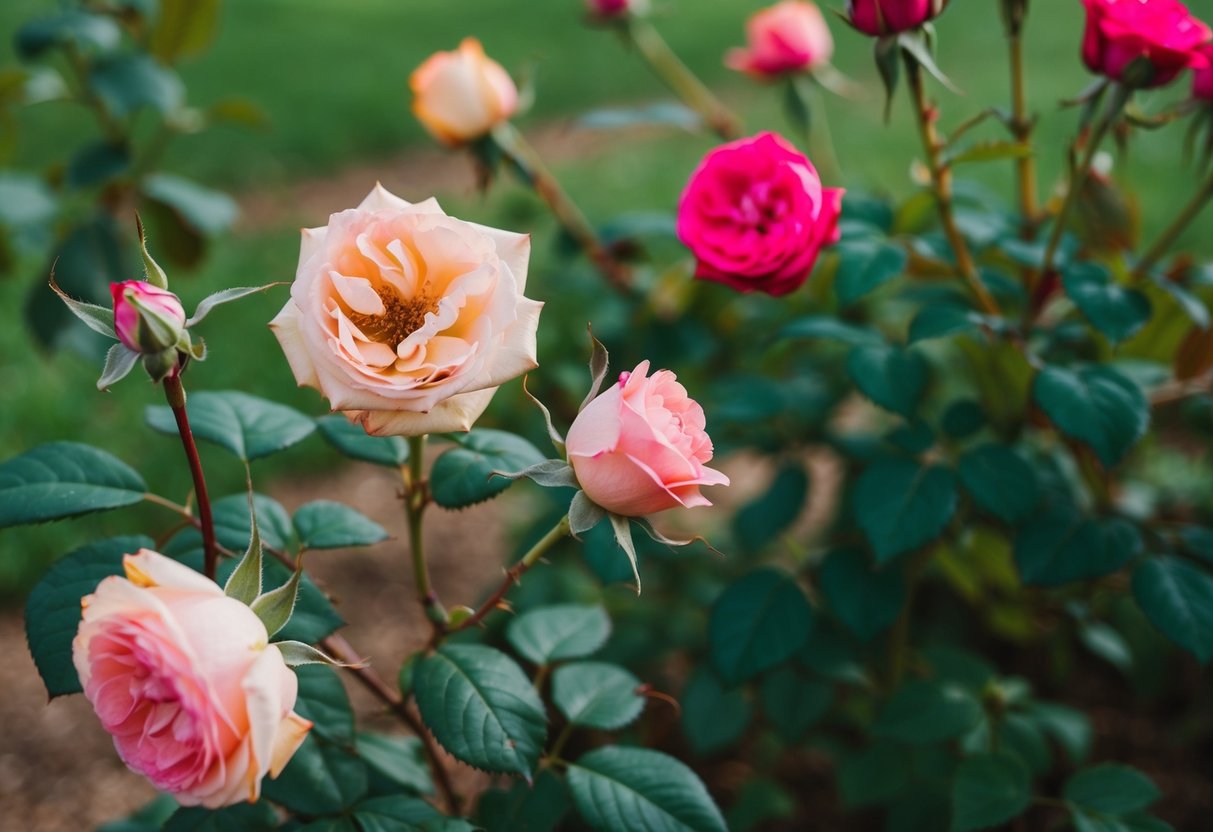
Deadheading is an important part of rose care. It involves removing spent blooms from the plant to encourage new growth and more blooms. When done correctly, it can help keep your rose bush healthy and vibrant throughout the blooming season. Not deadheading might result in more rose hips instead of flowers.
The Role of Deadheading in Rose Care
Deadheading helps your rose bush continue blooming all season. By cutting off spent blooms, you signal the plant to produce more flowers instead of turning the spent blooms into rose hips. This process encourages the plant to focus its energy on new growth.
It’s best done regularly to keep your roses looking their best. Use sharp pruning shears and cut at a 45-degree angle above a set of healthy leaves. Regular deadheading prevents diseases and keeps the plant tidy.
What Happens When You Don’t Deadhead?
If you skip deadheading, your roses may not bloom as much. Instead, they might form rose hips, which are seeds that develop when flowers are left alone. These hips can drain the energy from the plant, reducing its overall bloom quantity.
Without deadheading, spent blooms can also make your rose bush look untidy and less appealing. Additionally, old petals can fall to the ground, attracting pests or promoting diseases. Maintaining regular deadheading helps avoid these issues and ensures your rose bush remains healthy and beautiful.
Types of Roses That Require Less Deadheading
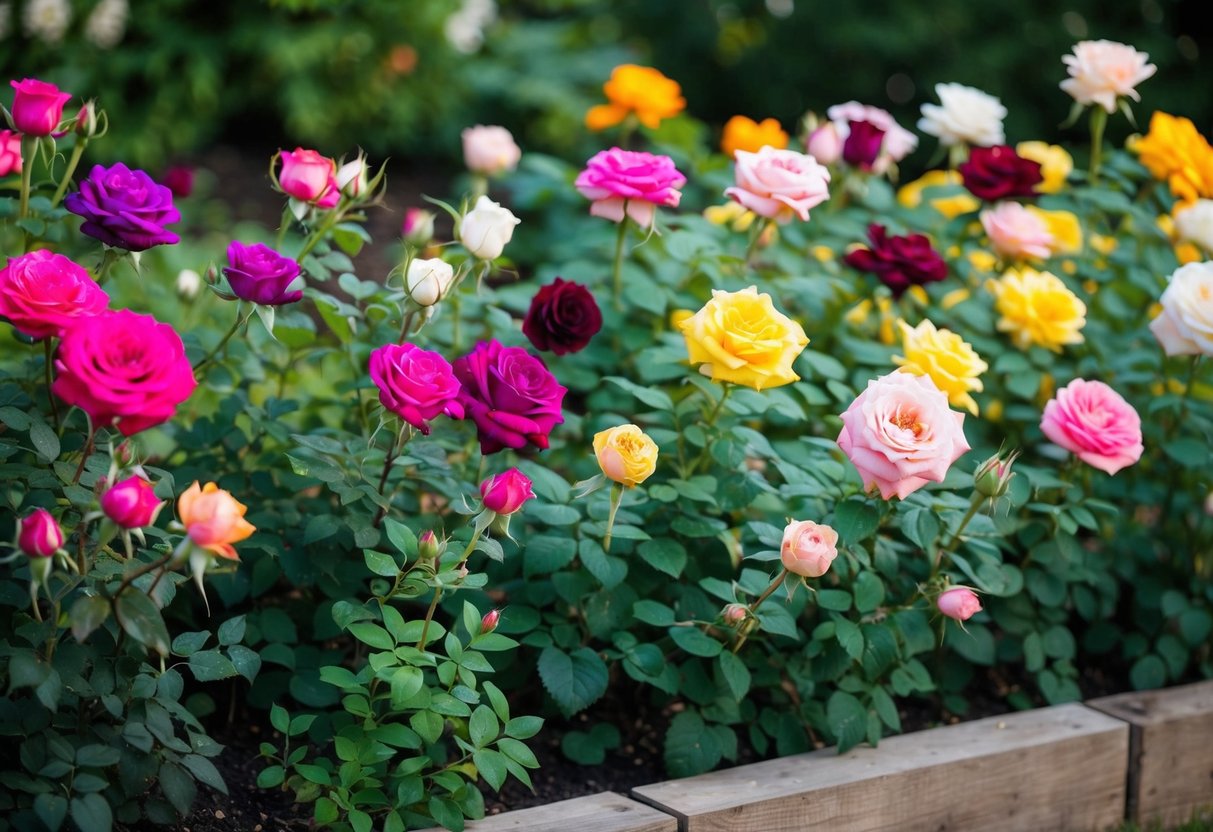
Some rose varieties are less demanding when it comes to deadheading, which can save you time and effort in your garden. These roses are known for their self-cleaning abilities, continuous blooms, and low maintenance needs.
Shrub Roses and Their Self-Cleaning Nature
Shrub roses are a great choice if you’re looking for roses that don’t need much deadheading. A particularly easy-care option is Monrovia’s Grace N’ Grit, a shrub rose that demands little pruning and tolerates a wide range of climates. Because they are self-cleaning, shrub roses let old blooms naturally fall away, promoting new growth and reducing your gardening chores.
These roses are generally hardy and resistant to diseases, making them perfect for busy gardeners. They often don’t develop rose hips, which means they can focus their energy on producing new blooms instead of seeds. This quality adds to their ease of care, as they continuously renew themselves throughout the growing season. If you prefer less maintenance, consider adding self-cleaning shrub roses to your garden.
Landscape Roses and Low Maintenance
Landscape roses combine aesthetics with low maintenance, making them an excellent option for gardeners who prefer less upkeep. Knock Out roses are well-known for their disease resistance and ability to bloom continuously without needing deadheading. These roses have a rugged constitution and thrive in various climates, which adds to their appeal.
The Fairy and carpet roses also fit into this category. They can cover large areas with their vibrant blooms, needing minimal intervention from you. These roses, along with other landscape varieties, naturally drop spent flowers, ensuring that your garden remains looking neat. If you’re looking for roses that don’t require regular pruning, consider using landscape roses in your outdoor space.
Floribundas and Continuous Bloomers
Floribundas are another type of rose that often requires less deadheading. Known for their dense clusters of blooms, these roses can flower repeatedly throughout the season. While they still benefit from occasional deadheading to encourage blooms, they are generally less demanding than hybrid teas.
The continuous blooming nature of floribundas makes them a favorite among gardeners who crave vibrant color without constant maintenance. These roses can tolerate being left alone for longer periods, ensuring that your garden remains colorful and lively for months. Consider incorporating floribundas into your garden for a low-maintenance yet stunning floral display.
Pruning Versus Deadheading
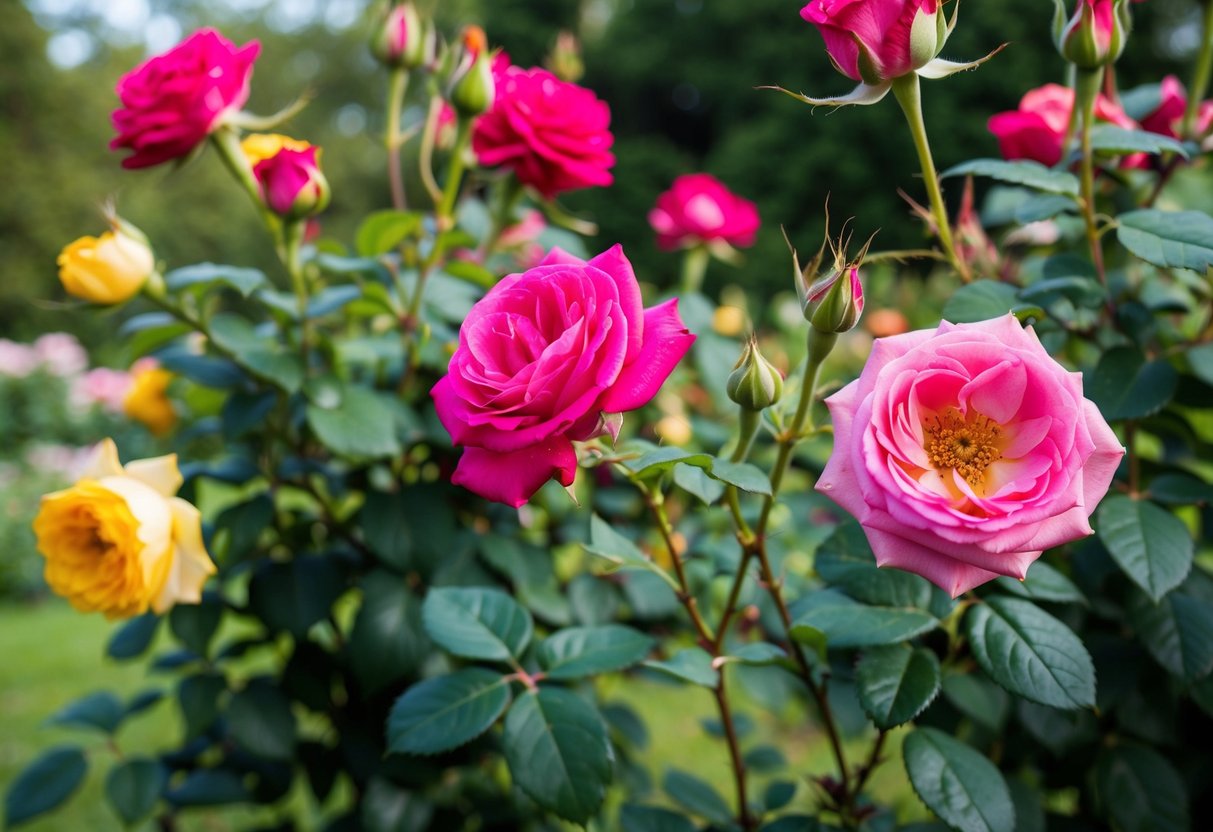
When caring for roses, it’s crucial to understand the differences between pruning and deadheading. Both help maintain plant health and appearance, but they serve distinct purposes.
The Distinct Goals of Pruning and Deadheading
Pruning and deadheading each focus on improving your roses in specific ways. Pruning mainly involves cutting back parts of the plant to foster healthy growth and shape. It encourages strong stems and improves air circulation, which reduces the risk of disease. Pruning is typically done during the dormant season.
Deadheading is the process of removing spent blooms. By cutting off faded flowers, you encourage the plant to produce more blooms instead of seeds. This keeps your roses looking their best and can extend the flowering season. Unlike pruning, deadheading is done during the blooming season to promote continual growth.
Both techniques require different timing and methods but play crucial roles in rose care.
Proper Techniques for Pruning Roses
Knowing how to prune roses properly is key to successful gardening. Using sharp pruning shears, make precise cuts to avoid harming the plant. Always cut above a bud eye, a small bump where a leaf meets the stem, to encourage new growth.
Prune in early spring for most roses. This is when you can shape the plant, remove dead wood, and improve air circulation. Cut at a 45-degree angle to help water run off and prevent rot. The angles should direct water away from the bud eye, reducing the chance of disease.
Understanding these pruning techniques helps your roses thrive with stronger, healthier blooms.
Cultural Practices for Healthy Roses

To keep your roses vibrant and flourishing, it’s important to manage their water, sunlight, and fertilization needs effectively. Additionally, staying ahead of diseases and pests is key to maintaining healthy rose plants.
Optimizing Water, Sunlight, and Fertilization
Roses thrive with about 1-2 inches of water per week. It’s best to water deeply but infrequently, which helps strengthen the roots. Morning is an ideal time to water, as it allows foliage to dry throughout the day, reducing the chance of diseases.
Sunlight is essential for roses since it aids in photosynthesis, keeping the plants energized. Aim for at least six hours of direct sunlight each day. If possible, choose a planting location that receives gentle morning sun and shade in the afternoon.
Fertilization is crucial in providing nutrients. Apply a balanced rose fertilizer during the growing season. Look for formulas with nitrogen, phosphorus, and potassium. Using organic compost can also enhance soil quality and boost rose health. Avoid over-fertilizing to prevent nutrient burn and ensure your roses stay in good shape.
Preventing Diseases and Pests
Controlling diseases and pests is vital for the well-being of your roses. Regularly inspect your plants for signs of diseases like black spot or mildew. Promptly remove any affected foliage to prevent the spread.
Use horticultural oils or insecticidal soaps to manage common pests such as aphids or spider mites. Regular pruning helps increase air circulation, minimizing disease risk. For effective rose pruning tips, check out these common mistakes to avoid.
Applying mulch around your roses can help retain moisture, suppress weeds, and moderate soil temperature. This not only keeps your roses healthy but also reduces pest habitats. Practice good hygiene by cleaning up fallen leaves and petals, as this limits hiding spots for diseases and pests.
Seasonal Care for Ever-Blooming Roses
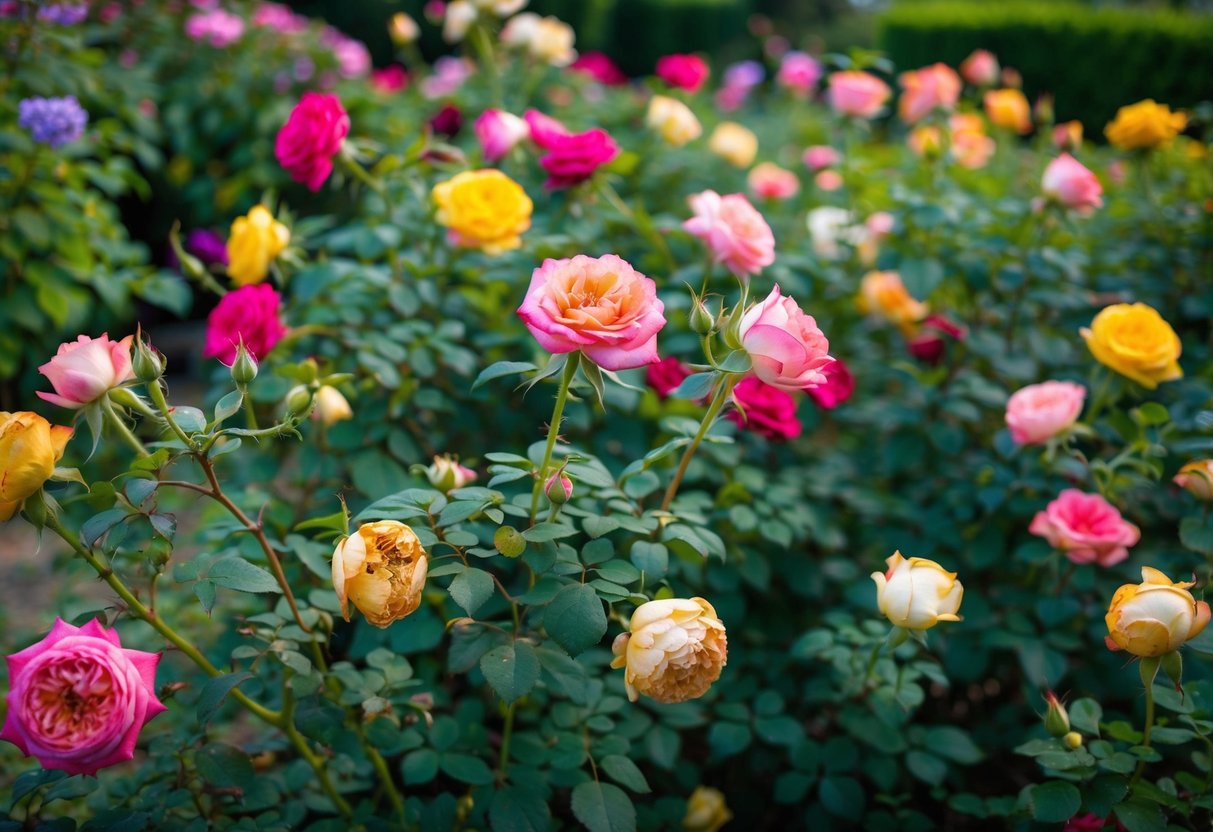
Ever-blooming roses require specific care throughout the year to thrive and produce continuous blooms. Understanding how to look after these roses during different seasons can help you enjoy their beauty all year long.
Spring Care for Vigorous Growth
Spring is a crucial time to prepare your roses for a healthy growing season. Begin by pruning dead or weak wood to encourage new growth. When pruning, cut back hybrid tea roses to around 18 inches. For climbing roses, focus on removing old flower buds and shaping the plant.
Apply a balanced fertilizer to boost growth. Choose a product that is high in nitrogen to promote leaf development. Ensure your roses get at least six hours of sun each day. Regularly check soil moisture, ensuring it stays moist but not waterlogged.
Adding a layer of mulch around the base helps retain moisture and suppress weeds. This sets the stage for healthy, vigorous growth.
Summer Tips for Peak Blooms
During summer, rebloom is your goal. Deadheading, or removing old blooms, is essential to keep energy focused on producing new flowers. With ever-blooming roses, this step encourages continuous flowering.
Monitor water needs closely, particularly in hot weather. Deep watering once or twice a week is better than frequent shallow watering. Keep an eye out for pests and diseases common to roses, such as aphids and black spot. Early intervention can prevent larger problems later.
Feeding your roses with a fertilizer formulated for perennials encourages continuous blooming. Check the nitrogen, phosphorus, and potassium levels that are optimal for roses. Ensuring balanced nutrition supports vibrant blooms.
Preparing Roses for Winter
In colder months, your goal is to protect your roses. Begin by stopping fertilization in late fall, as new growth can be damaged by frost. Allow some flower buds to form into rose hips. This naturally signals the plant to go dormant.
For hybrid tea roses and similar varieties, mound soil or mulch around the base to insulate roots. Appropriately cover climbing roses with burlap or a rose cone if your area experiences harsh winters.
Watering deeply before the ground freezes helps roses sustain their moisture needs during dormancy. This careful preparation ensures your roses enter winter healthy and ready to rebloom in spring.







